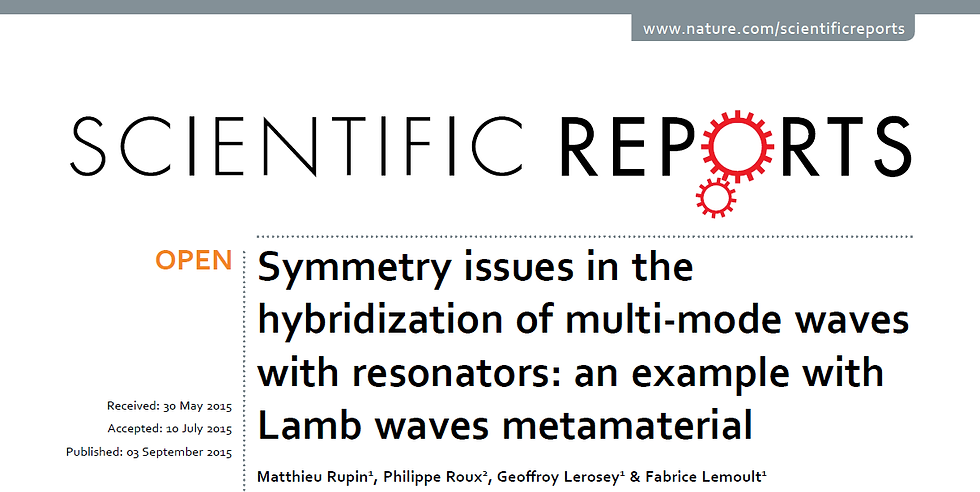Rupin et al., Sci. Rep. (2015)
- matthieurupin
- 11 janv. 2016
- 2 min de lecture


The experimental setup (Fig.1) is similar to the one already used in the PRL paper except that we reduced the thickness of the metallic plate to 2 mm in order to make it more flexible. As a consequence the influence of the flexural resonances of the rods on the wavefield in the plate is enhanced which allows a fine study of this interaction.
Indeed, the experimental determination of the dispersion relation (Fig.2) exhibits unusual doubly hybridized propagative branches. To explain this effect we use numerical simulations (Fig.3a) which reveal that these branches correspond to modes having an evolving polarization in regard of the wavenumber (Fig.3b). For the small wavenumbers the mode is horizontally polarized (hybridization of the S0 Lamb wave) while for the large wavenumbers the hybrid mode is vertically polarized. The latter is the only one we were able to detect experimentally because the setup is not sensitive to the horizontal part of the wavefield.
To further analyze the influence of the flexural resonances on the wavefield we studied the hybridization obtained when the natural symmetry of the plate is respected. This was done by adding the same array of rods on both sides of the plate leading to the realization of a symmetric metamaterial (Fig.4a). As a consequence, both polarizations conserve their natural decoupling. The dispersion curve of the longitudinal displacement noted u (left panel on Fig.4b) can only be obtained for a longitudinal excitation of the plate (S0 Lamb mode). Similarly the dispersion of the transverse displacement noted v (right panel on Fig.4b) is detected only for a transverse excitation (A0 Lamb mode). In both cases a single hybridization (traduced by a single inflexion of the propagative branches) is observed (polariton behaviour).





























Commentaires